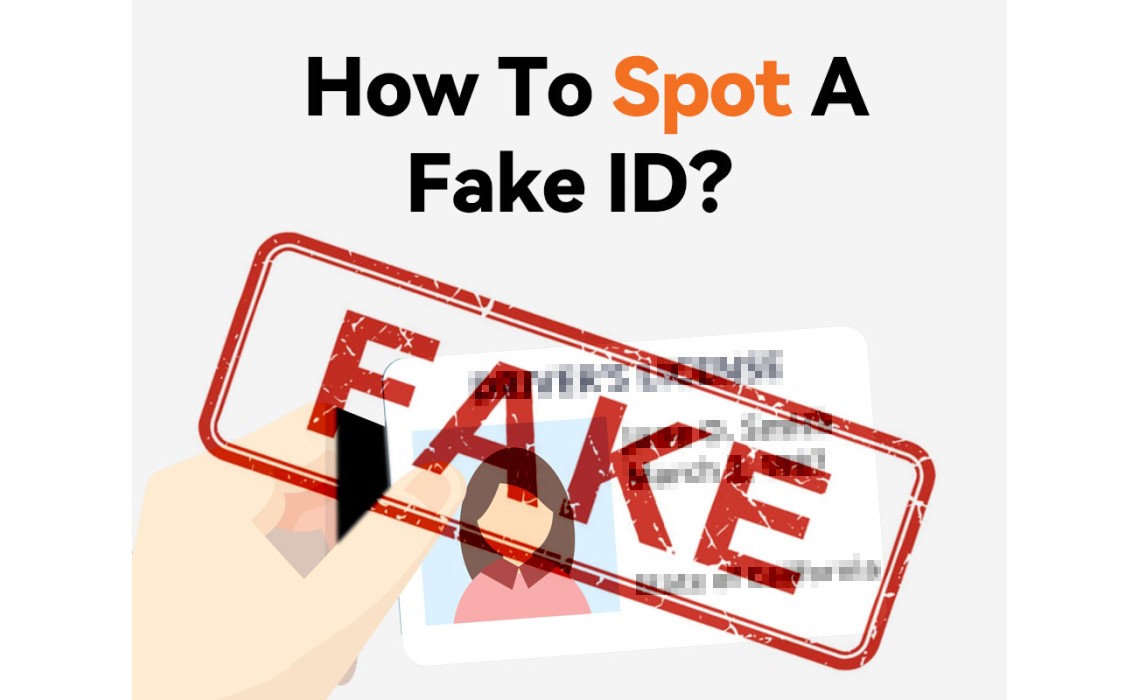How to Spot A Fake ID?
In our previous discussion on "How to Get Trustworthy Fake IDs in the USA," we delved into the reasons behind the growing demand for fake IDs among individuals in the United States. With an increasing number of minors seeking to acquire fake IDs, the variety of channels available for purchasing them has expanded. In an environment where fake IDs are widespread, it's crucial to understand how to discern authentic IDs from fake ones.
In the United States, minors have developed several strategies for obtaining fake IDs, including:
Purchasing from Online Vendors:
The internet hosts a wide array of websites and vendors specializing in the creation of fake IDs. Minors often utilize these services, submitting personal details and photographs to have a fake ID crafted.
Utilizing Social Networks:
Within their social circles, minors might discover contacts who know how to secure fake IDs. They often approach these connections to explore options for obtaining one.
Relying on Local Contacts:
It's not uncommon for minors to seek help from older acquaintances or friends who are familiar with local sources for fake IDs, asking for their assistance in acquiring one.
DIY Fake ID Creation:
A riskier approach involves minors attempting to manufacture their own fake IDs using tools such as printers and laminators. These self-made IDs usually lack the quality of professionally made ones and are easily identifiable as fake.
Modifying Existing IDs:
Another method involves the scanning and alteration of legitimate IDs, changing details like the date of birth to appear older. This practice is not only illegal but also comes with significant legal repercussions if detected.
It's crucial to recognize the illegality of obtaining and using fake IDs. Such actions can lead to severe legal consequences, including fines and criminal charges, not to mention potential negative effects on future life opportunities, such as college admissions and job prospects.
Identifying a Fake ID: Essential Tips and Techniques
Recognizing a counterfeit ID requires careful examination of various telltale signs that indicate its authenticity may be compromised. Given that security features differ widely across jurisdictions and are subject to change, here are universal tips to help you spot a fake ID:
1. Assess Material and Texture:
Authentic IDs are often made from specific materials such as PVC (polyvinyl chloride) or polycarbonate. Counterfeit IDs may feel unusually flimsy or off in thickness and texture compared to legitimate IDs.
2. Conduct a Visual Inspection:
· Look for tampering signs, like peeling, uneven surfaces, or inconsistent fonts.
· Compare the photo on the ID with the person presenting it, focusing on hard-to-alter features.
· Check for holograms and other security features, which are challenging for forgers to duplicate. Viewing these from different angles can be revealing.
3. Utilize UV Light:
Many authentic IDs feature elements only visible under UV light. Use a UV light source to look for hidden images or patterns.
4. Examine Microprint:
Under magnification, what appears as solid lines to the naked eye is actually fine text. This microprint is difficult for counterfeiters to replicate accurately.
5. Verify Magnetic Stripe or Barcode:
Modern IDs often include a magnetic stripe or barcode encoding the holder's details. Scanning this data can confirm if it matches the printed information.
6. Look for Errors:
Spelling mistakes, incorrect abbreviations, or unusual formatting are red flags. Official IDs won't contain such errors.
7. Feel the Edges:
Genuine IDs typically have smooth edges, while fake IDs may feel rough or have noticeable ridges, indicating poor craftsmanship.
8. Compare with a Genuine ID:
If possible, compare the ID in question with a known authentic one, focusing on the features outlined above.
Understanding that security features vary by issuing state or country is crucial. Staying informed about these features can enhance your ability to spot fakes. However, as counterfeiters evolve their techniques, those needing to verify IDs regularly (like bouncers, law enforcement, or retail workers dealing with age-restricted products) should seek out ongoing training and consider investing in specialized detection equipment.
With over a decade of in-depth experience in the identification verification industry, IDPAPA has mastered the myriad techniques employed to assess the authenticity of ID cards. We understand the scrutiny IDs undergo, such as bending, scanning, dropping tests, and examination under UV light, common practices among bouncers and retail clerks.
To meet this challenge, we ensure that every scannable ID we craft is put through a comprehensive testing process. Each fake ID is meticulously checked prior to dispatch to guarantee its ability to stand up to close examination.
If you're in need of a trustworthy source for creating a scannable ID, your search ends with IDPAPA. As industry frontrunners, we specialize not just in the design of your card but also in ensuring it succeeds in scanning tests.


